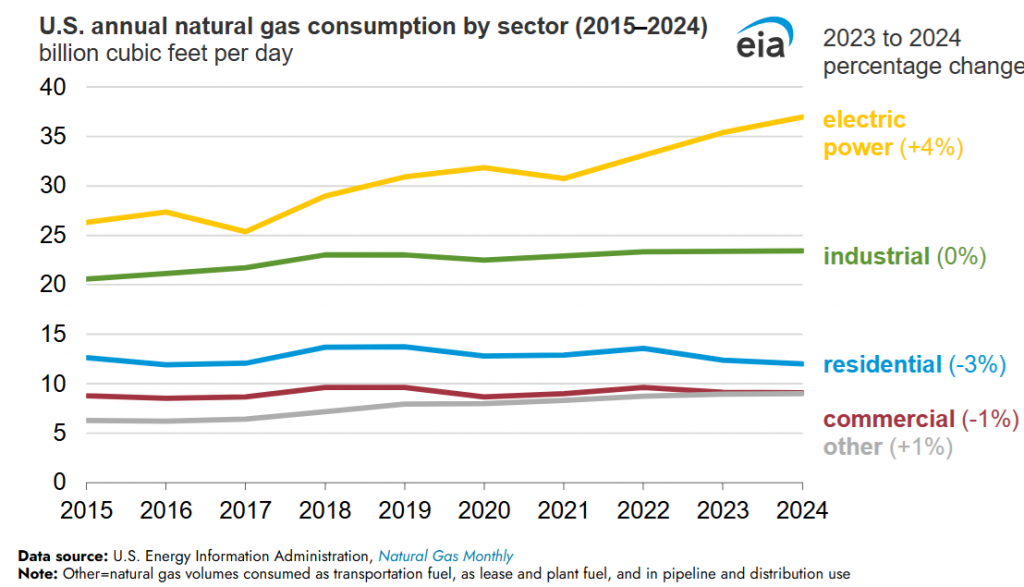The U.S. Energy Information Administration (EIA) recently reported that U.S. natural gas consumption set new winter and summer consumption records in 2024, highlighting the growing importance of natural gas in the global energy mix.
This surge in consumption comes amid record production levels, even as drilling activity remains subdued. The implications of these trends are significant, influencing everything from energy prices to power generation choices.
Record-Breaking Natural Gas Consumption and Production
According to the latest EIA data, natural gas production remains at record levels despite relatively low levels of new drilling activity. This resilience has contributed to stable supply levels, ensuring that the market remains well-supplied even as demand reaches new highs.
One major factor in this record consumption is the increasing role of natural gas in power generation (see How AI Data Centers Are Reshaping America’s Electric Grid), industrial applications, and exports. The expansion of LNG facilities, such as the newly commissioned Plaquemines LNG project, has further strengthened demand, while colder-than-expected weather patterns have also driven up usage.
However, despite these bullish factors, high natural gas prices have started to displace gas-fired power generation in favor of coal, reversing some progress in the transition to cleaner energy sources.
Enverus Intelligence Research (EIR) Outlook: Challenges and Opportunities
While natural gas demand remains strong, Enverus Intelligence Research (EIR) has highlighted a mixed outlook for prices. EIR recently upgraded its NYMEX Henry Hub gas price forecast for the rest of 2025, citing the rapid expansion of LNG exports and favorable weather conditions. However, the firm expects prices to average around $3.90/MMBtu, approximately 30 cents below the current forward strip, suggesting that record production will continue to keep prices in check.
“High natural gas prices are a headwind to gas-fired generation, to the benefit of coal,” said Al Salazar, director at EIR. This shift raises concerns about the energy transition and the long-term viability of natural gas as a bridge fuel in the move toward decarbonization.
The Broader Market Implications
Despite record-breaking consumption and production, natural gas markets are not without challenges. The geopolitical landscape, particularly U.S. trade policies, remains a significant factor affecting investment and market stability. Tariffs on imported materials could raise costs for pipeline construction and LNG export terminals, potentially slowing future supply growth.
At the same time, global energy markets remain volatile due to OPEC’s decision to unwind production cuts and uncertainty surrounding U.S. economic policies. While these factors primarily impact oil prices, they also create ripple effects that influence natural gas markets, investor sentiment, and long-term infrastructure planning.
Looking Ahead
As 2025 unfolds, natural gas remains a key player in the evolving energy landscape. Record consumption and production levels indicate strong demand, yet price pressures and competition from coal highlight ongoing market challenges. With strategic investments and accurate forecasting, the industry must navigate these complexities while ensuring reliable and sustainable energy supply for the future.
Follow Robert Rapier on LinkedIn or Facebook








